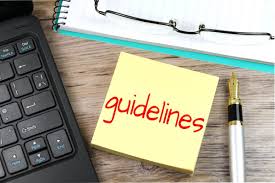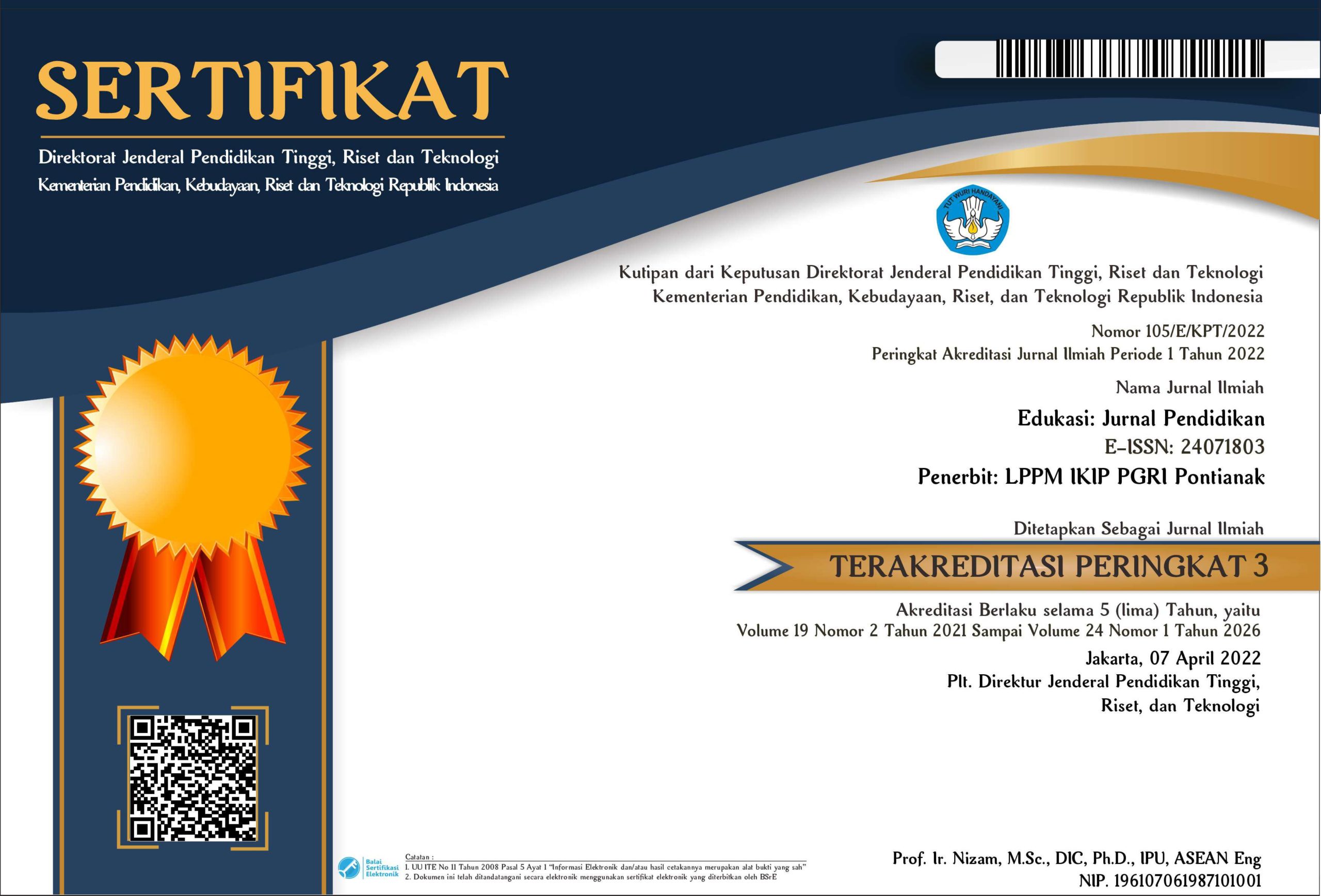FOSTERING EFL STUDENTS' ORAL COMMUNICATION SKILLS THROUGH INDIVIDUAL PRESENTATION
DOI:
https://doi.org/10.31571/edukasi.v22i1.6979Keywords:
fosterin, EFL students, oral communication skills, individual presentationAbstract
This classroom action research aims to foster the EFL students’ oral communication skills in the English and English literature program in a presentation skills class through an individual presentation project. This research was conducted at the Sekolah Tinggi Bahasa Asing (STBA) Pontianak, whose participants were taken from the fourth-semester students. This research was carried out in three cycles using observation checklists and field notes to collect the data. Afterward, the data were explained quantitatively and qualitatively. The findings show that individual presentation concretely fosters the students’ oral communication skills in the third cycle. The fostering is proven by improving individual presentation aspects such as clarity, sound volume, body position and eye contact, pause, and listener’s attention. Moreover, the fostering is indicated by the changing of the scoring scale from need improvement to good. Hopefully, this research can contribute to advancing research in oral communication skills.
Downloads
References
Ary, D., Jacobs, L. C., Sorenson, C., & Razavieh, A. (2017). Introduction to Research in Education (8th ed.). Canada: WADSWORTH Cengage Learning.
Ati, A. & Parmawati, A. (2022). The Use of Oral Presentation in Teaching English To Improve Students Speaking Skill. PROJECT (Professional Journal of English Education), 5(2), 300–305.
Chivers, B. & Shoolbred, M. (2007). A Student’s Guide to Presentations: Making your Presentation Count. London: SAGE Publications.
Brooks, G. (2018). Using oral presentations to improve students ’ English language skills Using Oral Presentations to Improve Students ’ English Language Skills. Kwansei Gakuin University Humanities Review, 19(1), 199–212.
Burhanuddin, A. (2021). Improving Students’ Oral Communication Skills in Public Speaking through Individual Presentation Task. Jurnal Lmiah Lingua Idea, 12(2), 159–167.
Fitriah, P. I., Yulianto, B., & Asmarani, R. (2020). Meningkatkan Keterampilan Komunikasi Siswa Melalui Penerapan Metode Everyone Is A Teacher Here. Journal of Education Action Research, 4(4), 546–555.
Goral, A., Mazurkiewics, G., Jalocha, B., & Zawadzki, M. (2021). Action Research: A Handbook for Students. Krakow: Instytut Spraw Publicznych.
Emden, J., V. & Becker, L. (2016). Presentation Skills for Students. London: Palgrave macmillan.
Lenaini, I. (2021). Teknik Pengambilan Sampel Purposive dan Snowball Sampling. HISTORIS: Jurnal Kajian, Penelitian & Pengembangan Pendidikan Sejarah, 6(1), 33–39.
Mahdi, D. A. (2022). Improving Speaking and Presentation Skills through Interactive Multimedia Environment for Non-Native Speakers of English. SAGE Journal, 12(1), 1-12.
Mandel, S. (2000). Presentation Skills: A Practical Guide to Better Speaking (3rd ed.). Seattle: Crisp Publications.
Mardiningrum, A., & Ramadhani, D. R. (2022). Classroom Oral Presentation: Students’ Challenges and How They Cope. Eralingua: Jurnal Pendidikan Bahasa Asing Dan Sastra, 6(1), 103-119.
Rahmania, F. N. (2020). EFL students’ self-efficacy and online presentation performance: Correlational study. Retain, 8(2), 66–75.
Tiu, J. S., Groenewald, E. S., Kit, O., Kilag, T., Balicoco, R. D., High, J., Teacher, S., & Asentado, D. E. (2023). Enhancing Oral Proficiency: Effective Strategies for Teaching Speaking Skills in Communication Classrooms. International Multidiciplinary Journal of education, 1(6), 343-354.
Wambui, T. W., Kibui, A. W., & Gathuthi, E. (2016). Communication skills vol.I: Students’ Coursebook. USA: LAP LAMBERT Academic Publishing.
Yundayani, A., & Kardijan, D. (2018). Improving Students’ Oral Presentation Performance Through the Use of Visual Media in Small Group Discussion. Journal of English Language and Literature (JELL), 3(2), 103–114.
Zellouma, A. (2018). Measuring The Effectiveness Of Classroom Presentations And Their Impact On Students’ Motivation For Fluent Speaking Performance. Revue Sciences Humaines, 2(1), 149-168.
Downloads
Published
How to Cite
Issue
Section
License
Copyright (c) 2024 Rafika Nurhidayah, Mita Nur Aflah

This work is licensed under a Creative Commons Attribution-NonCommercial 4.0 International License.
Authors who publish in this journal agree to the following terms:
- Authors retain copyright and grant the journal the right of first publication with the work simultaneously licensed under a Creative Commons Attribution License (CC-BY-NC) that allows others to share the work with an acknowledgment of the work's authorship and initial publication in this journal.
- Authors are able to enter into separate, additional contractual arrangements for the non-exclusive distribution of the journal's published version of the work (e.g., post it to an institutional repository or publish it in a book), with an acknowledgment of its initial publication in this journal.
- Authors are permitted and encouraged to post their work online (e.g., in institutional repositories or on their website) prior to and during the submission process, as it can lead to productive exchanges, as well as earlier and greater citation of published work.

 Download: 122
Download: 122


















